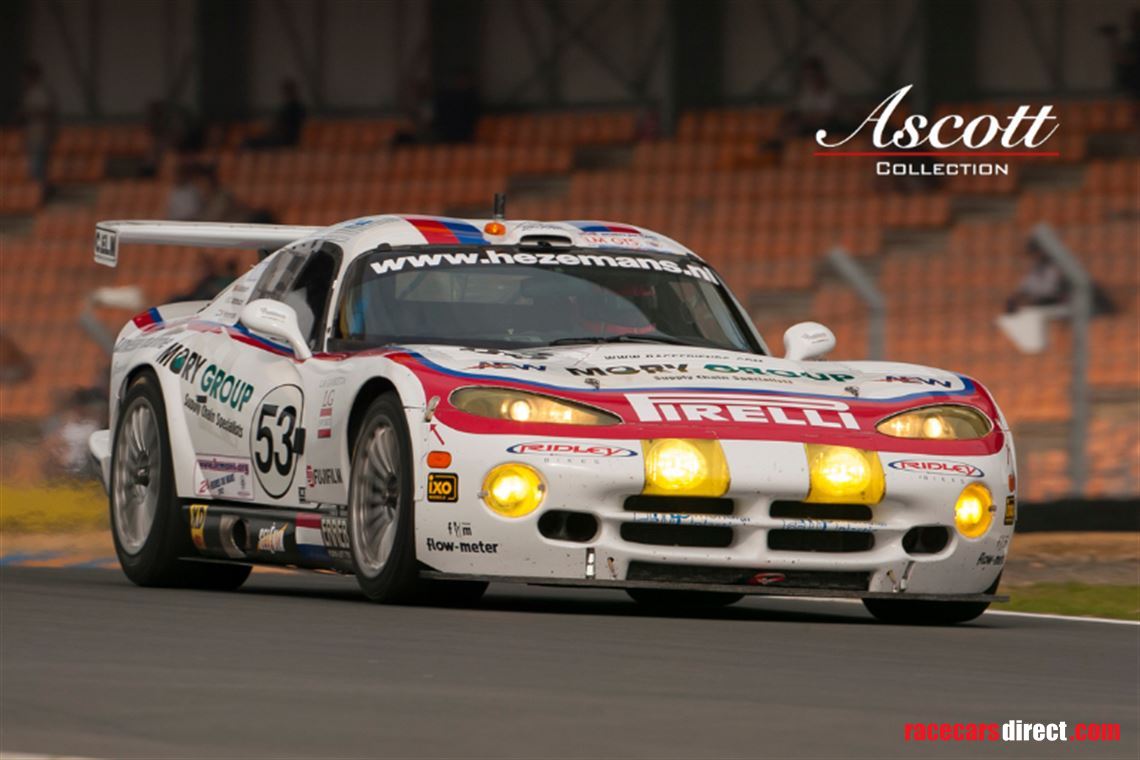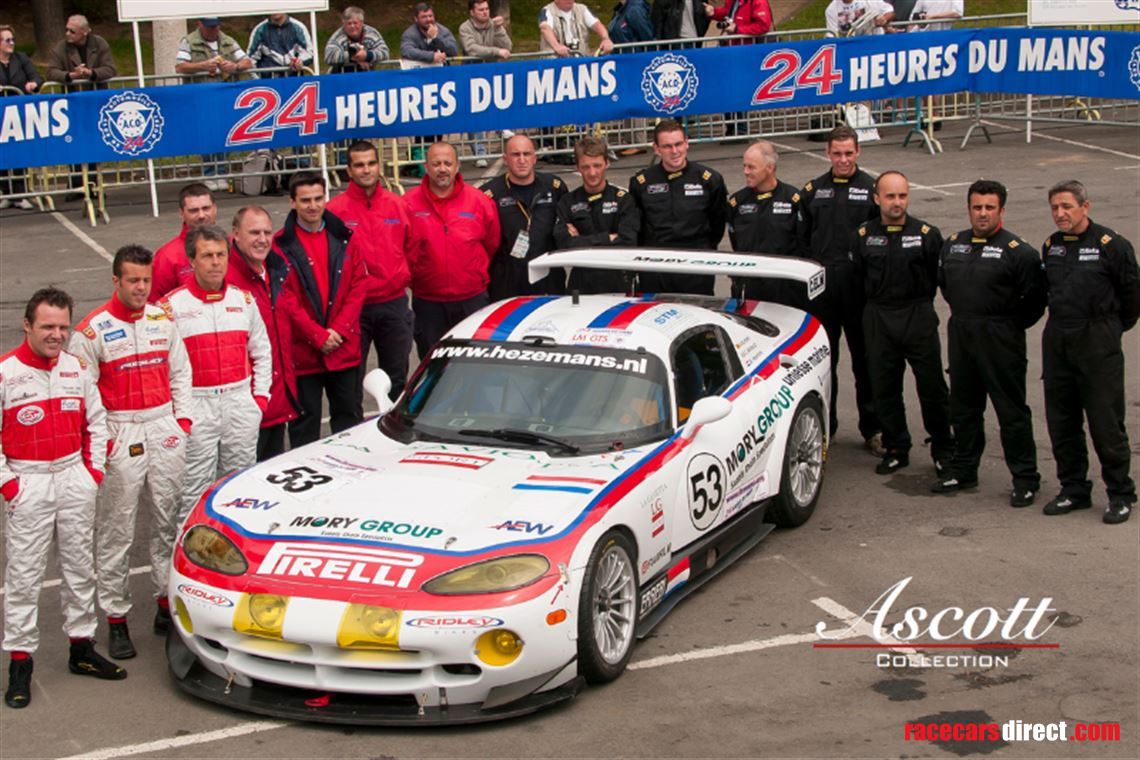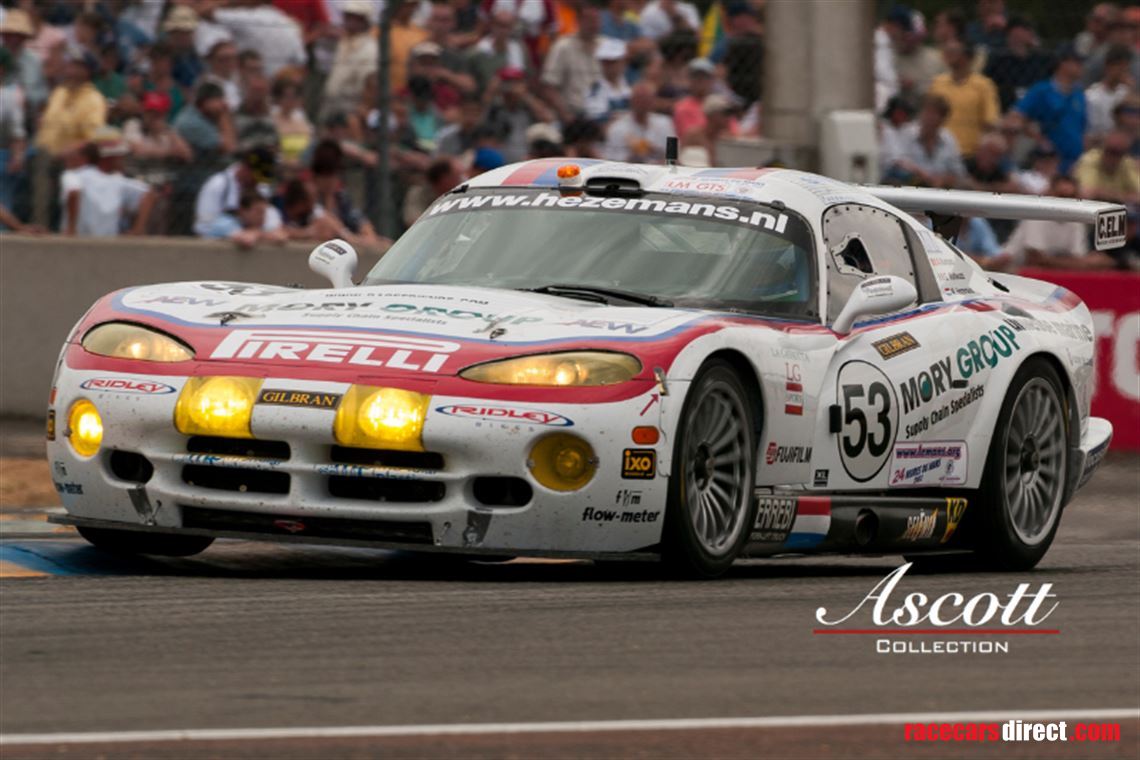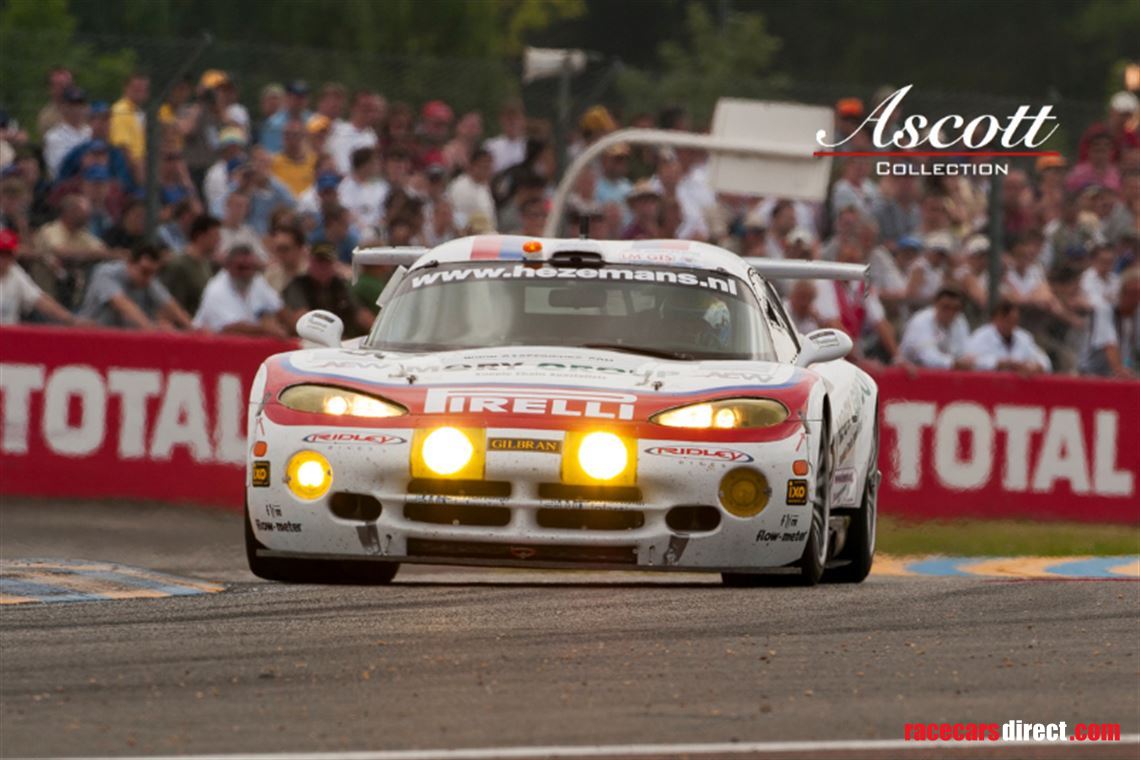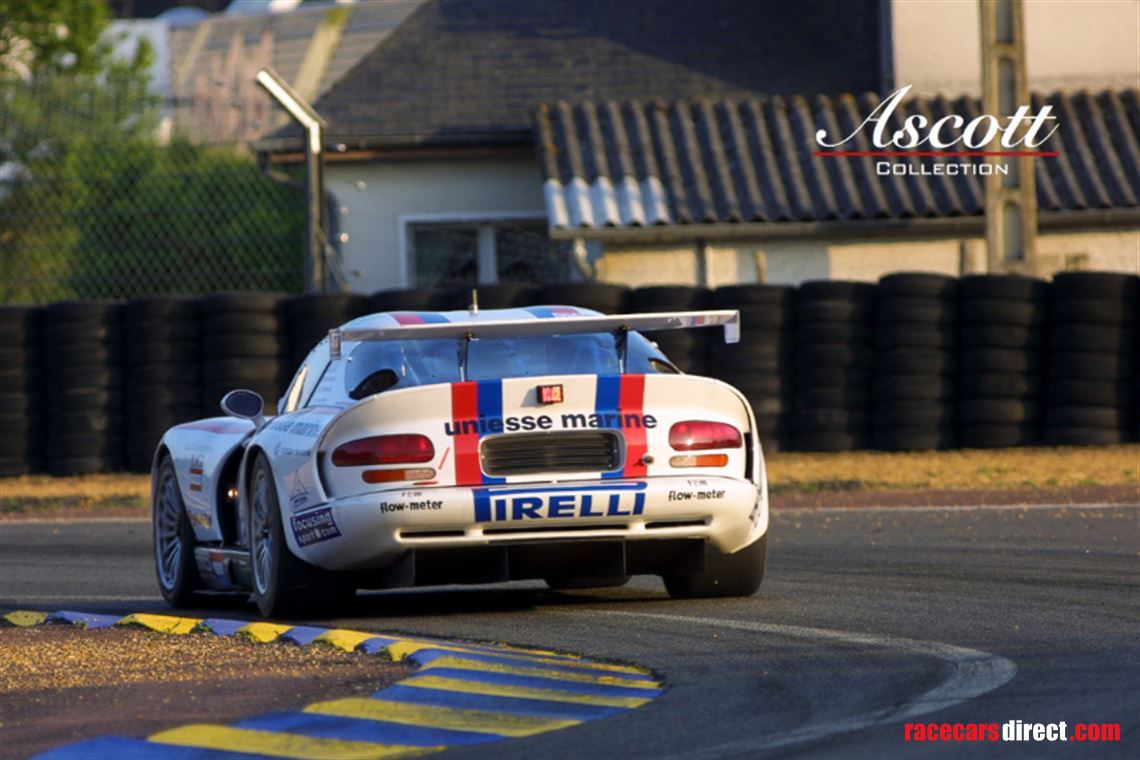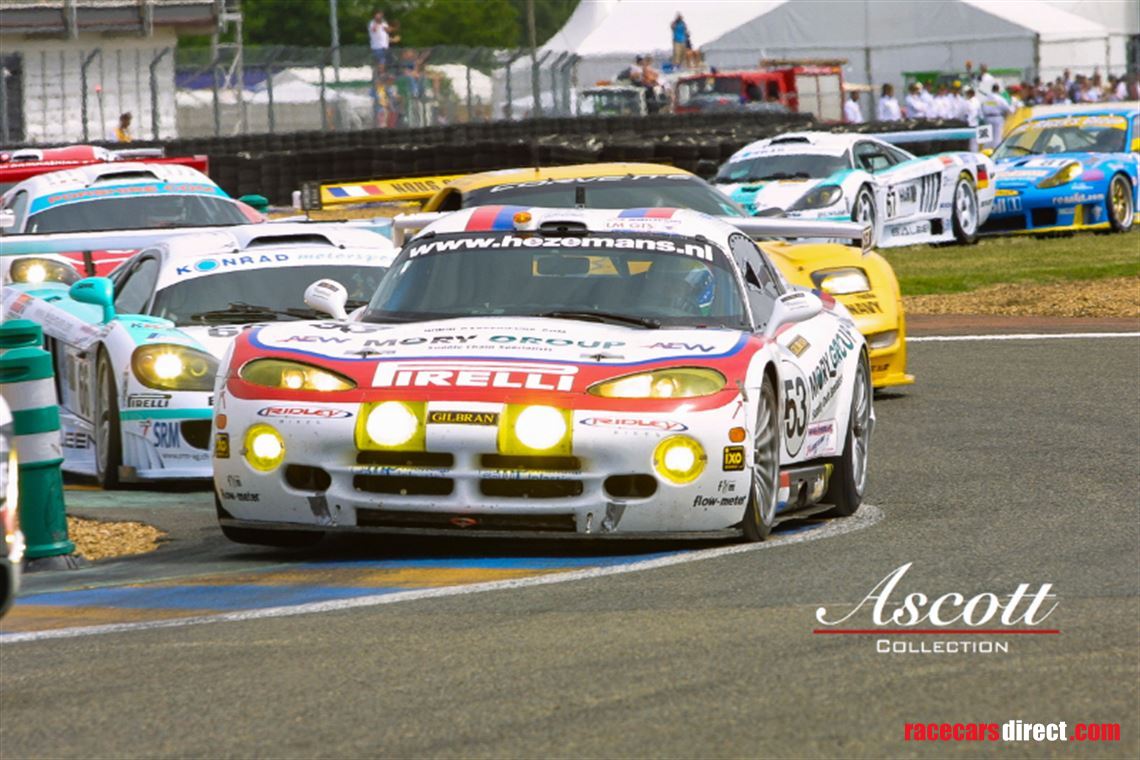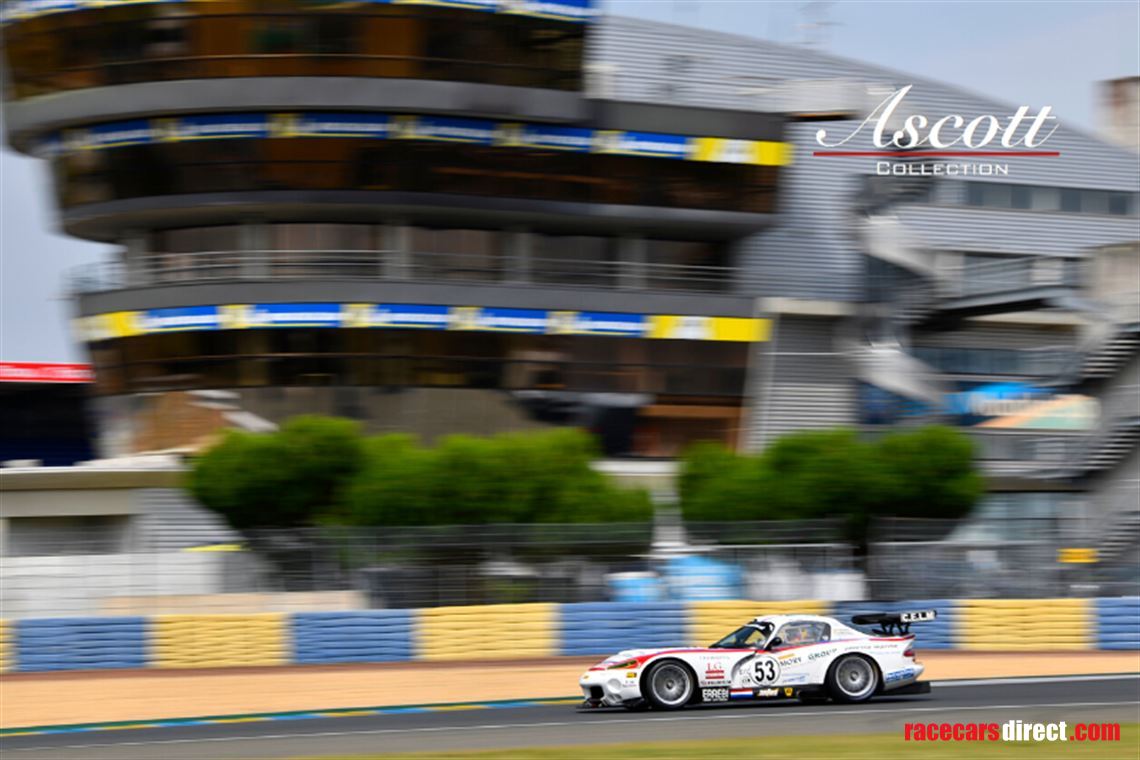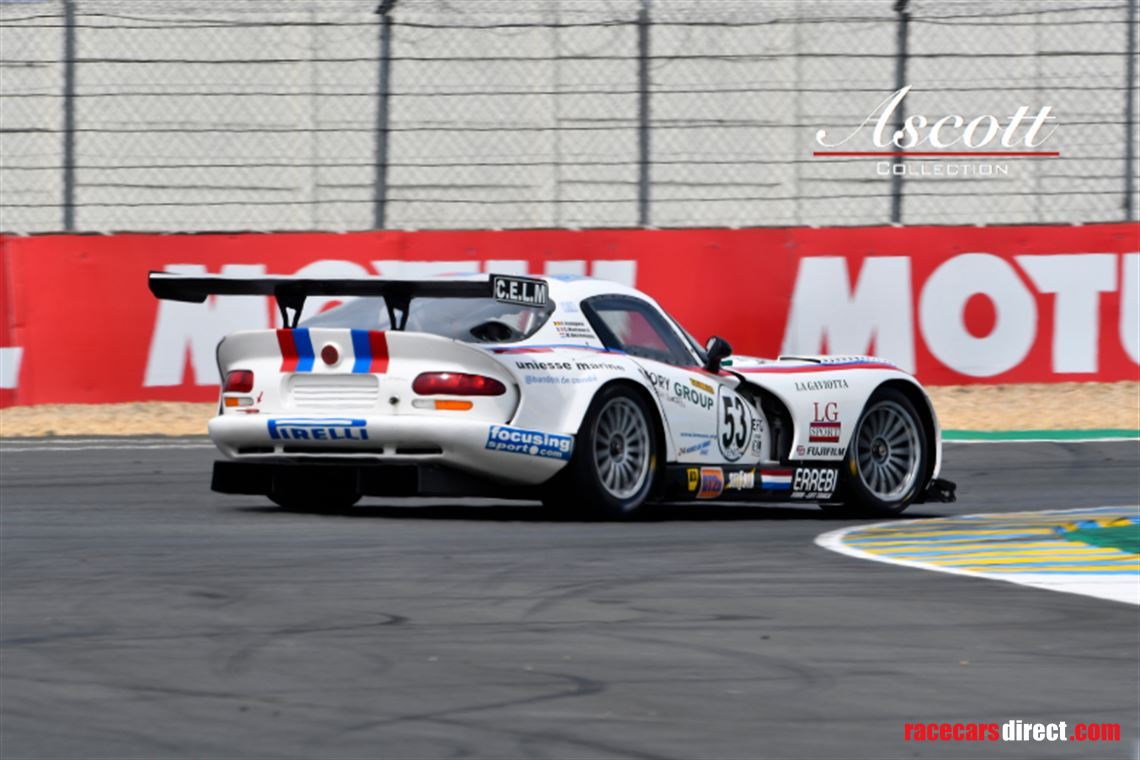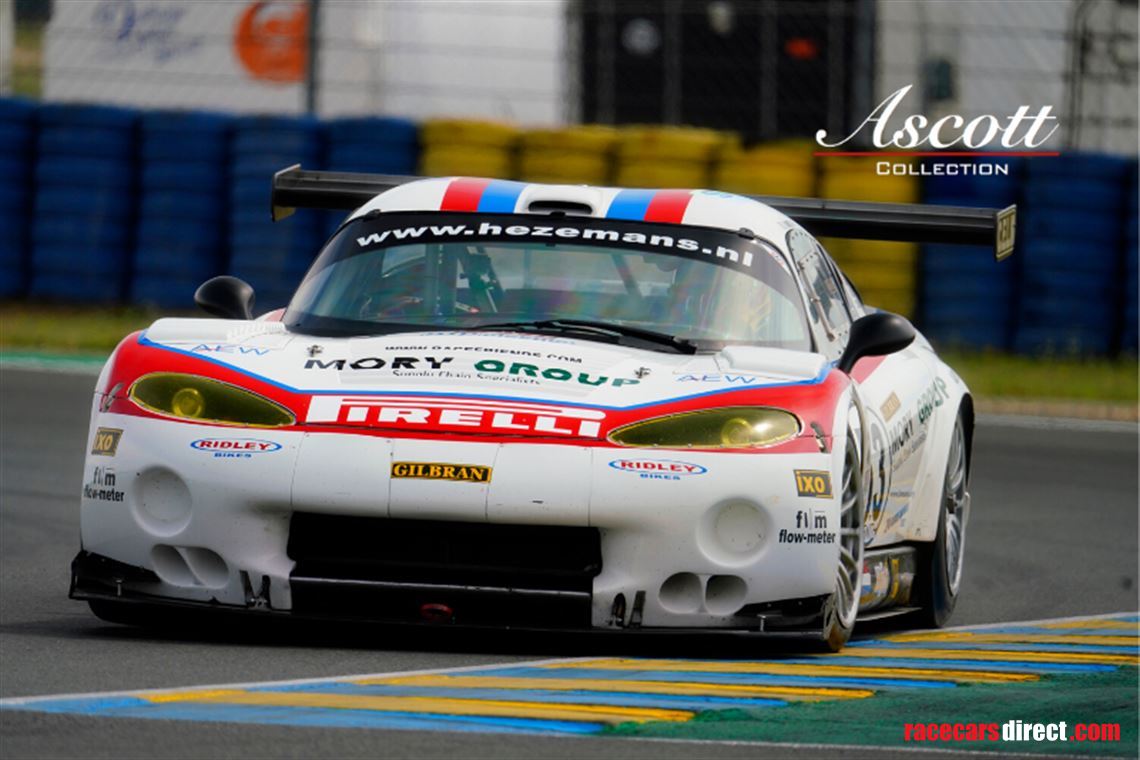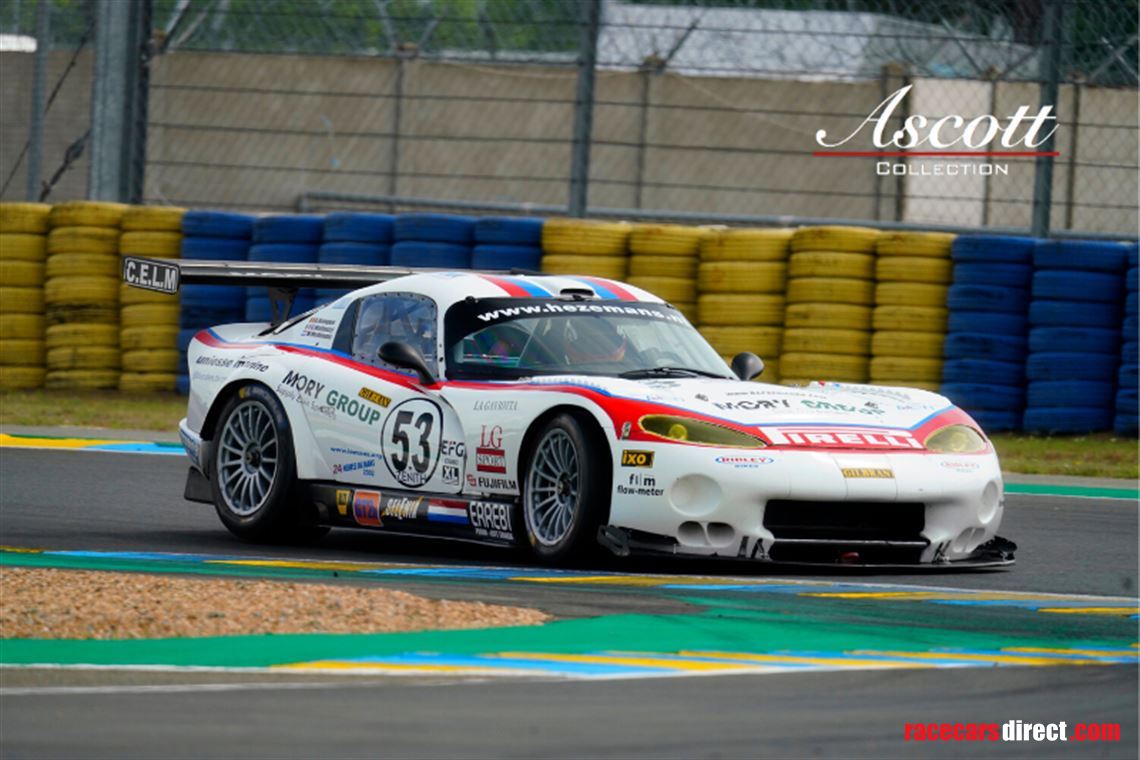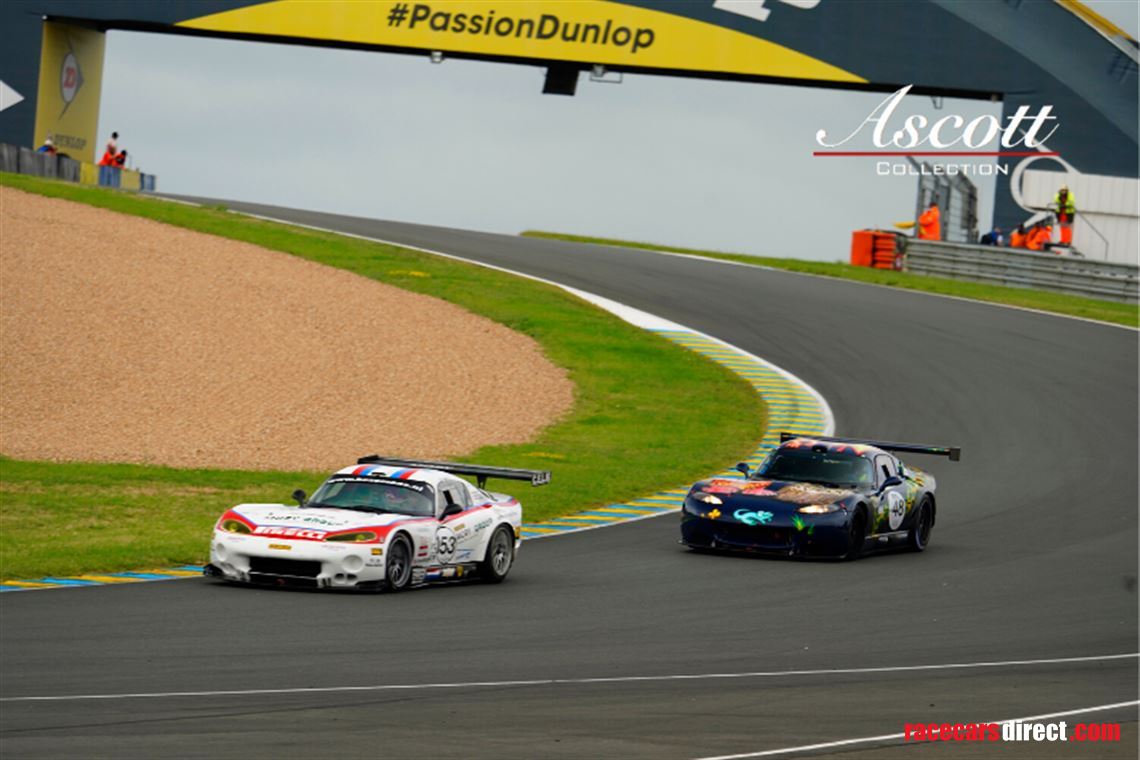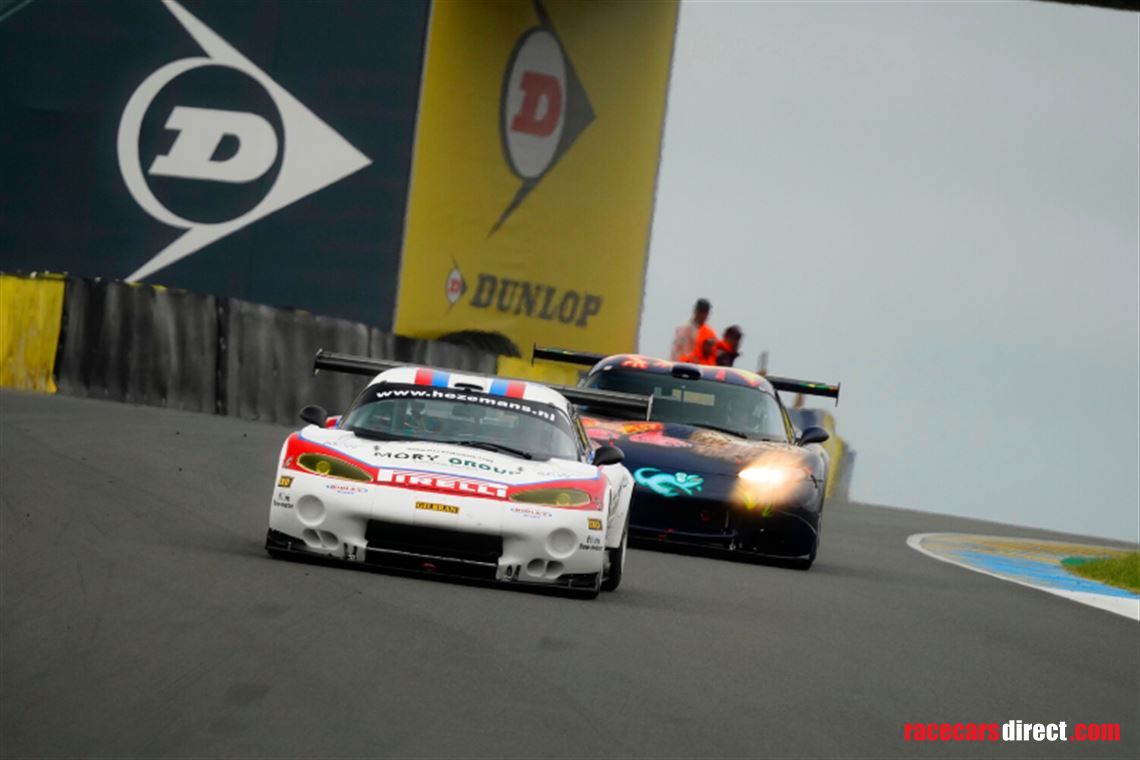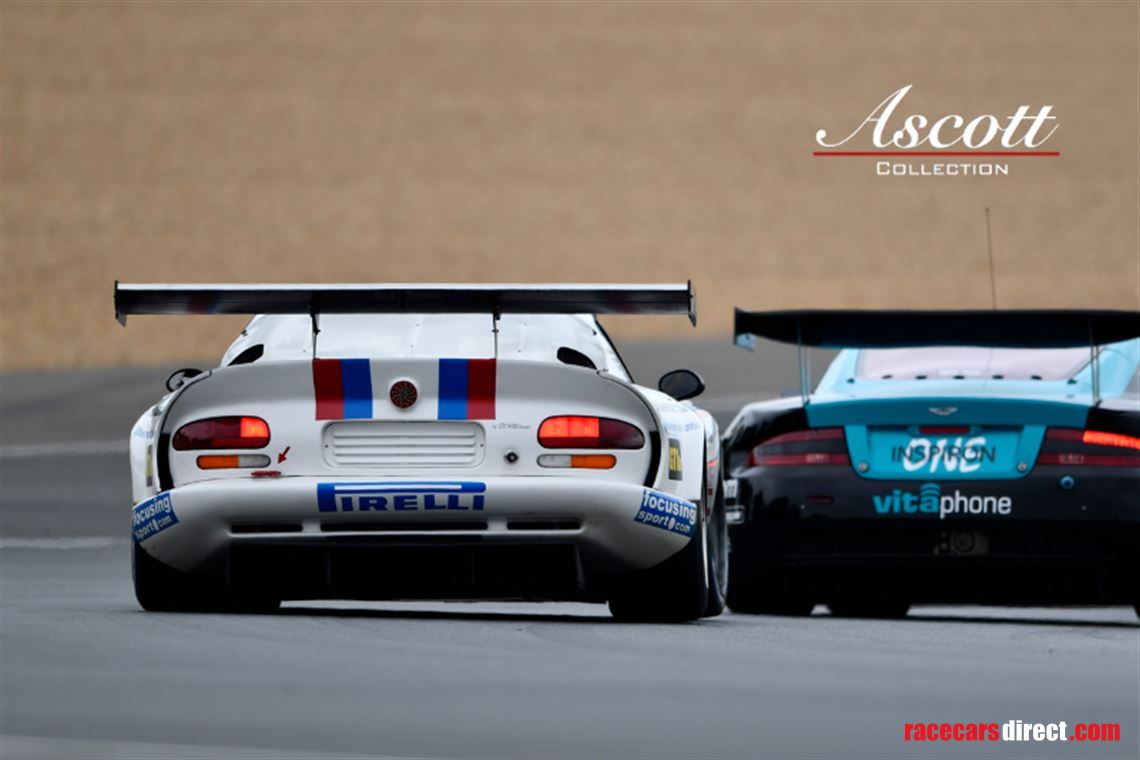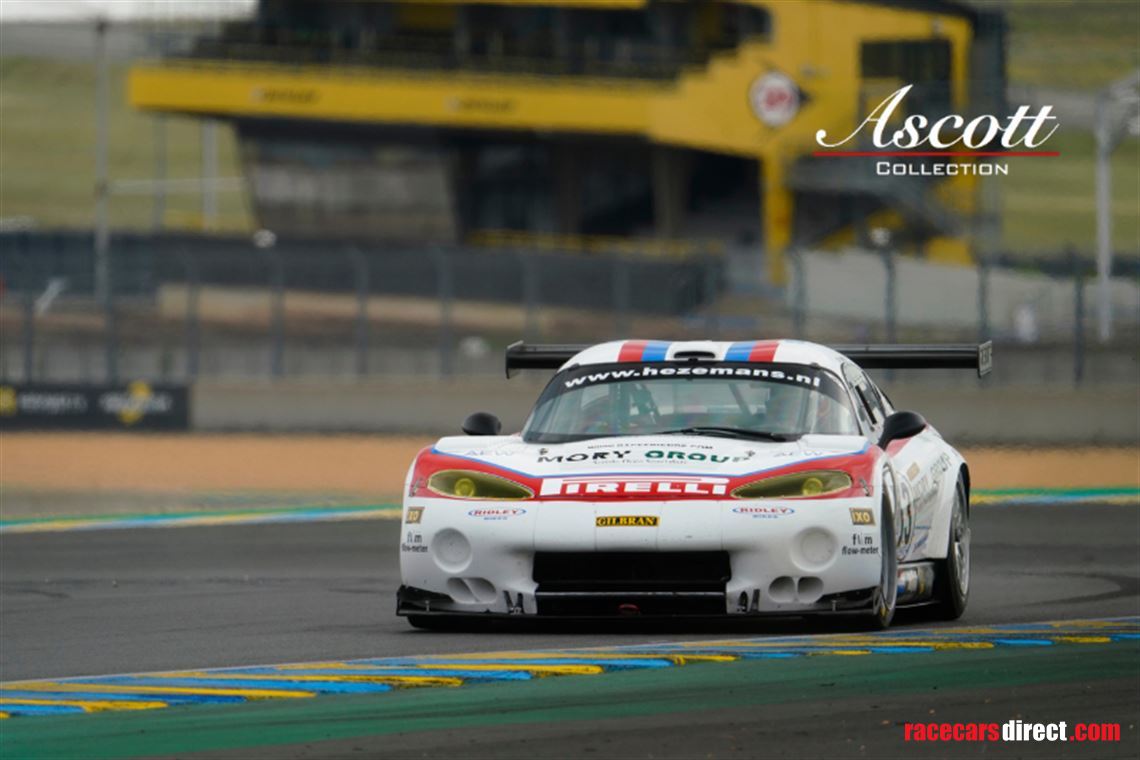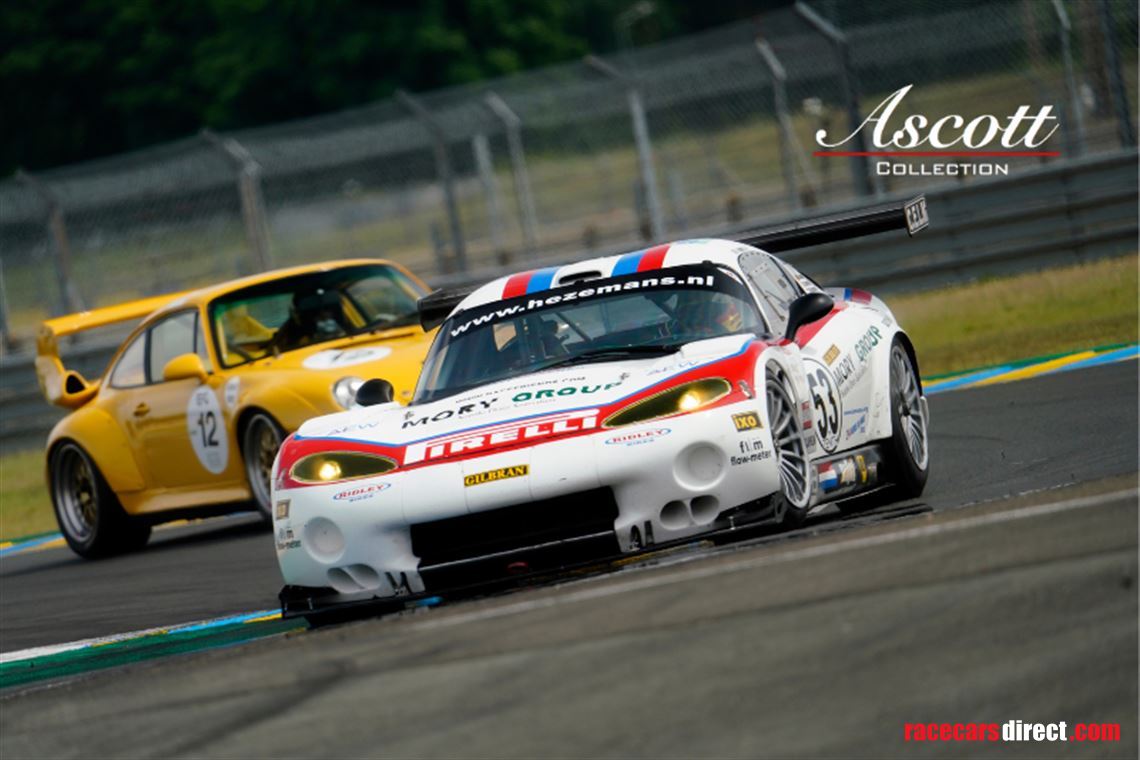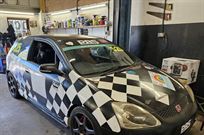Race & Rally Parts

£ POA
2001 CHRYSLER VIPER GTS-R GT1
Description:
A very competitive GT developed by ORECA and having outperformed the competition
Top GT1 specifications with Holinger sequential gearbox
Podium at the 24 Hours of Spa in 2001 - 24 Hours of Le Mans in 2002 - Five victories in Belcar
Reliable and cost effective - Engine just rebuild
Eligible for Masters Endurance Legends, Daytona Classic, Sebring Classic, Gulf Historic, Endurance Racing Legends & Le Mans Classic
2001 CHRYSLER VIPER GTS-R GT1
A very competitive GT developed by ORECA and having outperformed the competition
Top GT1 specifications with Holinger sequential gearbox
Podium at the 24 Hours of Spa in 2001 - 24 Hours of Le Mans in 2002 - Five victories in Belcar
Reliable and cost effective - Engine just rebuild
Eligible for Masters Endurance Legends, Daytona Classic, Sebring Classic, Gulf Historic, Endurance Racing Legends & Le Mans Classic
The Chrysler Viper GTS-R created its legend at Le Mans, Spa and Daytona. A contemporary of the Corvette C5-R with which it fought fierce battles, from Sebring to Daytona via Le Mans, the Viper GTS-R embodies a unique vision of Grand Tourism! A car with sleek, timeless lines, built for speed, with a throaty sound from a colossal Chrysler V10. It was entered by Chrysler, which wanted to make it an iconic car with a history, not just another muscle car. Chrysler endeavoured to use as many parts from the production version as possible, making the Viper a true GT in spirit and DNA.
Ascott Collection is now offering for sale one of the 55 examples of the GTS-R produced. A car entered in the most prestigious endurance races and a driving force in today's historic races.
The beginnings of the Viper programme
The Chrysler Viper GTS-R (known as the Dodge Viper GTS-R in the United States) is derived from the production version of the Viper. Introduced in 1992, after the very first prototype was presented to the public in 1989, the Viper quickly found its way onto the racetrack in national races in North America. But the first model (a roadster) lacked sufficient rigidity and was not fully suited to top-level competition. While a coupé model appeared in the range - the Viper GTS - Chrysler decided to develop a major sports programme in parallel. The idea was to create a genuine synergy between the GTS road model and the GTS-R (for Racing) racing car, to serve as the brand's flagship, particularly in Europe. This commitment was approved in 1995, and led to a debut in international competition in 1996.
A number of suppliers were selected to start the programme. Engineers from Caldwell Development Inc. worked with the support of J&P Motorsports. Chrysler personnel were also directly involved in aerodynamic studies in the United States and England, in partnership with Reynard Motorsports. Riley & Scott, another well-known American company, also helped build the first prototypes, before this role was handed over to Roush Industries.
For North America, Chrysler had initially approached the Canaska/Southwind team to enter the cars. After a season in IMSA GT in 1996 and the presence of two chassis at the 24 Hours of Le Mans the same year (one of which finished 10th), Canaska/Southwind withdrew from the Viper development project in 1997.
The French team Oreca, which had also been selected at the start of the project, was chosen to build and maintain the cars at its workshops in Signes, and to act as a relay for Chrysler's official commitment in Europe and then around the world. Oreca was responsible for assembling all the components from the UK and the USA. From the C9 chassis, the Vipers were 'born' in the Var.
The Viper GTS-R has an exceptional track record
The list of successes achieved by the Viper GTS-R is so long as to make one's head spin. The most important thing to remember about the Viper saga is the rise in power made possible by the support of Oreca.
In 1997, Oreca won the drivers' and teams' titles in the FIA GT (GT2 category), bringing the first major success to the model.
Success followed success. The Viper GTS-Rs won four further FIA GT World Championships (1998 and 1999 in GT2, 2001 and 2002 in GT1), as well as three consecutive class wins at the Le Mans 24 Hours (from 1998 to 2000), two American Le Mans Series championships (1999 and 2000), and overall victory at the 2000 Daytona 24 Hours.
Multiple overall victories in other 24-hour events and more than 10 national championships around the world count among the Viper's achievements. Of all the seasons, the year 2000 was the crowning achievement. Oreca's triumph at the Le Mans 24 Hours was total, and the model's dominance became a reality, encouraging more and more teams to choose the American model. This partly explains why the Oreca workshops assembled 14 chassis in 2000 (from the C25 to the C38). By far the most prolific year.
Viper GTS-R chassis C39: Podium at the Spa 24 Hours in 2001, 5 victories in Belcar, then the Le Mans 24 Hours in 2002 and numerous upgrades to race in the GT1 category.
Third overall in the 2001 Spa 24 Hours
C39 took part in several FIA GT races during the 2001 season, entered by Bernard Winderickx (Silver Racing). It appeared under number 25 in all the races, with the exception of the 24 Hours of Spa where it wore number 26. In the Ardennes, this Viper GTS-R managed to take its crew to the podium after a hard-fought race. In fact, no fewer than four Viper GTS-Rs took the top four places against competition from Porsche, Ferrari, Lamborghini and others... A very promising start for our Viper.
In 2002, David Hart drove the car in the Belgian GT Championship (Belcar) in the GTA class under number 52. He managed to take at least 5 wins along the way, but still finished second in the final championship standings behind the GTS-R C11.
24 Hours of Le Mans 2002
The C39 was entered by Team Carsport Holland in the 2002 Le Mans 24 Hours in the GTS class under number 53. On this occasion, it was fitted with the ORECA "Evo" kit, which included a 3 cm wider track. It was also fitted with a Caldwell engine and a Holinger sequential gearbox. It had an excellent qualifying session, finishing fourth in the GTS class ahead of an armada of Viper GTS-Rs, Saleen S7Rs, Porsche 996 GT3 RSs and Ferrari 360 Modena cars.
Unfortunately, it retired in the 7th hour after a spin at the Dunlop chicane. Its Le Mans livery was white with black rocker panels and a red stripe that wrapped around the nose of the car and tapered backwards across the wings, doors and rear of the car. It currently wears this Le Mans livery.
Upgraded to GT1 configuration
In 2004, it was entered by the Hart Vastgoed team in a number of Belcar events in the GTA class. The car was silver with a black spoiler and red on the nose and centre of the bonnet.
Like many GTS-Rs, it then continued its sporting career, competing in the French GT Championship (FFSA GT) in the GT1 class in 2005 and 2006. In 2005, it wore number 8 and a silver livery with orange GTS stripes. In 2006, it raced under number 4, still in silver but with orange accents on the bonnet, wings, quarter panels and roof.
A highly competitive car in historic races and Endurance Racing legends
While 2006 appears to have been the car's last season in contemporary competition, its current owner has since taken possession of it and competed in a number of historic races.
In 2016, it won the FFSA Historic GT championship. Having been returned to its 24 Hours of Le Mans livery, C39 was then entered in Endurance Racing Legends, where its driver has always driven at the front of the field. At Paul Ricard in 2019, it finished second in the first race and fourth in the second. In June 2021 on the Bugatti circuit at Le Mans, it finished fourth overall in the first race and second in the second.
Since then, the engine has been overhauled, providing additional horsepower...
This GT1 is fast, reliable and relatively economical to run, given that its generous 8-litre V10 engine can run for dozens of hours before needing to be overhauled. C39 is both quick and easy to handle thanks to its GT1 evolutions and its Holinger sequential gearbox, a model of ease of use and reliability.
This ex 24 Hours of Le Mans and 24 Hours of Spa Viper is an excellent car for Masters Endurance Legends, Daytona Classic, Endurance Racing Legends Classic and of course Le Mans Classic.
Photo Credit 24 Hours of Le Mans 2002: John Brooks
Source: https://www.viperracinghistory.com/gts-r Thanks Shawn!
Website:
https://en.ascottcollection.com/viper-gts-r-c39Facebook:
https://www.facebook.com/ascottcollectionKeyword Search Terms:
CHRYSLER/VIPER/GT1/GT2/V10/ERL/MEL/LE MANS CLASSIC/SPADetails:
| Item Location: | Gazeran/France |
|---|---|
| Seller: |
ASCOTT Joined January 2014 |
|
ASCOTT COLLECTION Seller's other ads |
|
| Country: | France |
| City: | vaucresson |
| Phone: |
+33967334843 +33617494250 |
| Condition | Rebuilt |
| Trade or Private: | Private |
| Price: |
£POA
Make an Offer |
| Added: | 04/11/2024 |
| Views: | 5612 |
|
Share by Email Print page Report Sold |
|

